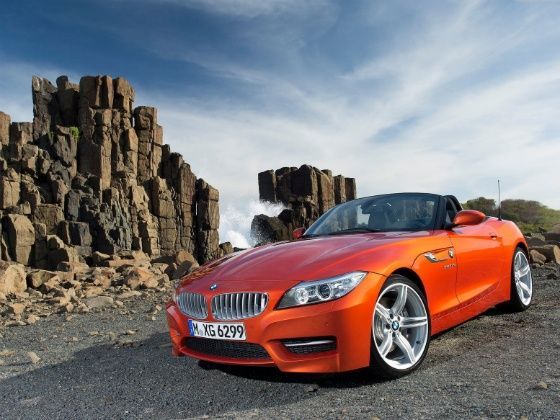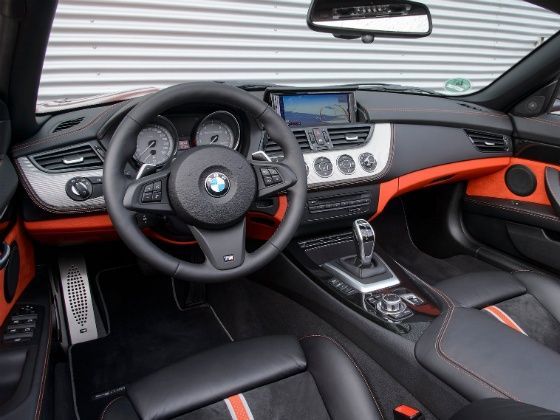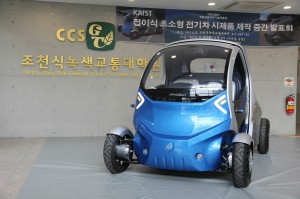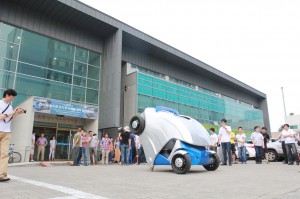New South Wales’ Snowy Mountains played a role in the Australian beginnings of Toyota, and the Landcruiser, when construction company Thiess used second-generation 20 Series ’Cruisers as Snowy Scheme workhorses in the late 1950s.
Four decades later the Toyota Prado arrived in Australia in its second generation, a slightly smaller version of the LandCruiser. Now in its fourth generation, the best-selling large SUV has just been treated to a facelift. (Meanwhile, as engineering feats go, we Aussies are still yet to top the Snowy Scheme).
Revised styling and redesigned interiors herald new driving aids, retuned suspension and improved safety. Meanwhile, pricing of the entry-level turbo diesel six-speed manual Toyota LandCruiser Prado GX (above) remains unchanged at $55,990, and price increases further up the range are small. The three-door, which was a slow seller, has been dropped.
A bold new five-column grille dominates the frontal styling rework, taking attention away from the new headlights and deeper bumper. Elsewhere, new 17- and 18-inch wheels and new paint colours set the new Toyota LandCruiser Prado apart from the original fourth-gen model, which arrived in Oz in late 2009.
Inside, a redesigned dash brings a new multi-media audio system, ‘Optitron’ dials and a TFT info screen for up-spec models; new interfaces and settings for carry-over off-roading systems, such as the addition of a ‘rock and dirt’ mode to the multi-terrain select system, which is now operated by a dial; and the addition of new systems such as trailer-sway control, which is incorporated into the electronic stability control.
Seven airbags and a rear-view camera remain worthy safety inclusions in the five-star ANCAP-rated wagon.
Toyota LandCruiser Prado GX and GXL variants offer silver highlights and piano black trim, while the upmarket VX and Kakadu (above) bring leather accents and woodgrain-look trim that looks both very Japanese and dated. Seven-seater variants – that’s all bar the GX, in which the extra row costs $2K – benefit from better third-row access thanks to a rear seat that now folds forward at a greater angle.
Toyota says the $64,190 turbo diesel five-speed auto GXL (up $555) is by far the buyers’ pick – 70 per cent of people choose it. Just five per cent of punters opt for the pricier $78,990 (up $1355) VX turbo diesel, and five per cent choose the expensive if well-equipped $92,590 (up $1455) turbo diesel Kakadu flagship – it gets a rear Blu-ray player, for example, which is far too good for the kids. The 20 per cent who buy the base GX includes a large proportion of commercial buyers.
The take-up rate for petrols is just five per cent, and the percentage of people who buy a manual in preference to the $2700-costlier auto is almost as small. Why does Toyota offer a petrol variant? Because when the Japanese maker sells almost 15,000 LandCruiser Prados each year (more than any vehicle in its segment), five percent of which amounts to more than 700 cars. However, at $1000 extra for the torquey, economical turbo diesel, you’d have to be seriously anti-diesel not to consider it.
Both the 4.0-litre petrol V6 (above), with 202kW of power and 381Nm of torque, and the 3.0-litre turbo-diesel four-cylinder, with 127kW and 410Nm, are carry-over engines.
Look more closely at the figures and you’ll see why it’s the diesel that does it for most buyers. While the torque figures are similar, the diesel offers its peak from a lazy 1600rpm – 2800 less revs than in the petrol. Meanwhile, the diesel is easier on the juice, at 8.5-8.8L/100km (manual-auto), compared with 11.5L/100km for the auto petrol.
Australia is the world’s third-largest market for the Toyota LandCruiser Prado, and the development of the LandCruiser remains inextricably linked to our wide, brown land, starting with the 450,000 durability and reliability testing kilometres carried out Down Under. Chief engineer Sadayoshi Koyari says his team’s motto is, “If it can survive in Australia, it can survive anywhere.”
Also, the Kinetic Dynamic Suspension System (KDSS) found on up-spec variants was invented and developed by Western Australia’s Kinetic Suspension Technology. The system can decouple the anti-roll bars, allowing increased wheel travel.
A short off-road test course at the $16m new National Industrial Skills Training Centre in Wodonga, Victoria, provided a sample of the LandCruiser Prado’s significant skill-set.
The front camera’s ability to tell the driver, via an on-screen graphic, where the front wheels are pointed proved invaluable when the LandCruiser Prado’s oversized grille was pointed at the sky.
The crawl control system took the throttle and brake work out of climbs and descents, leaving a relaxed driver to merely steer.
And the full-chassis 4×4’s long-travel independent front and live axle rear suspensions, with KDSS, helped keep all four on the dirt over a particularly challenging sequence of moguls.
Suspension revisions aimed at improving the LandCruiser Prado’s on-road manners also formed part of the facelift. Roll-stiffness was increased in an effort to reduce body roll, the hydraulic power steering was recalibrated, and the tuning of the stability control and traction control systems was improved.
On tarmac, the Toyota LandCruiser Prado remains understeer-biased. There’s a feeling of reluctance to turn-in that results from a small amount of lost motion either side of straight ahead, and a slight sense of unwillingness from the chassis as it’s coaxed into corners.
However, once you’re used to it and turn in earlier (or dial on more steering lock) the Prado’s an agreeable tourer on open country roads.
A lack of steering feedback does sap confidence and makes it difficult to judge front tyre grip levels. The nose feels like it will move from a subtly understeery mid-corner attitude to actually sliding, and will. But, again, a more sympathetic driving style helps sidestep the problem.
The above are standard separate-chassis symptoms and also reflect the offroad-ready tyres fitted to the LandCruiser Prado. It’ll never approach the dynamic ability of SUVs that aren’t engineered to also go offroad, but in the context of its separate chassis specification, the LandCruiser Prado handles well and rides comfortably.
The turbo diesel is clearly an off-roader-style rather than passenger-car-style engine, but is a willing worker that’s acceptably quiet. Other noises, such as tyre and wind are similarly well contained. The low torque peak means you don’t need to rev the engine hard, however the auto is a bit slow to downshift on hills, requiring a right-foot prompt for a lower ratio.
The Prado’s brakes are powerful and inspire confidence, and the ABS works effectively on dirt.
As medium-duty four-wheel-drives go, the Toyota LandCruiser Prado GX and GXL represent a worthwhile upgrade from the likes of Mitsubishi’s Pajero ($50K) and Nissan’s Y61 Patrol ($55K). The Toyota costs a bit more than its Japanese rivals, but it is more refined, has better road manners, and is just as capable in the bush.
However, the up-spec VX and Kakadu start to feel expensive in the context of the genuine premium on offer in a German SUV. Also consider that $100K buys a base Range Rover Sport, which will seriously challenge the LandCrusier Prado off road while trumping it for interior class and dynamics.
At the lower end, it’s best to think hard about what it is your wagon will spend its days doing, because if you’re not going to make full use of the abilities that a separate-chassis off-roader such as the Prado brings, a more dynamic road-biased SUV would make a better, more comfortable family car.
Consider Toyota’s own Kluger ($40K) or, even better, a Ford Territory ($40K) or Mazda CX-9 ($45K).
However, for genuine off-roaders, only a Land Rover Discovery 4 ($70K-$130K) can top the Toyota LandCruiser Prado, which means this civilised off-roader certainly has its niche, as more than 200,000 Aussie buyers have discovered since 1996, at a rate of more than 1000 a month.














































